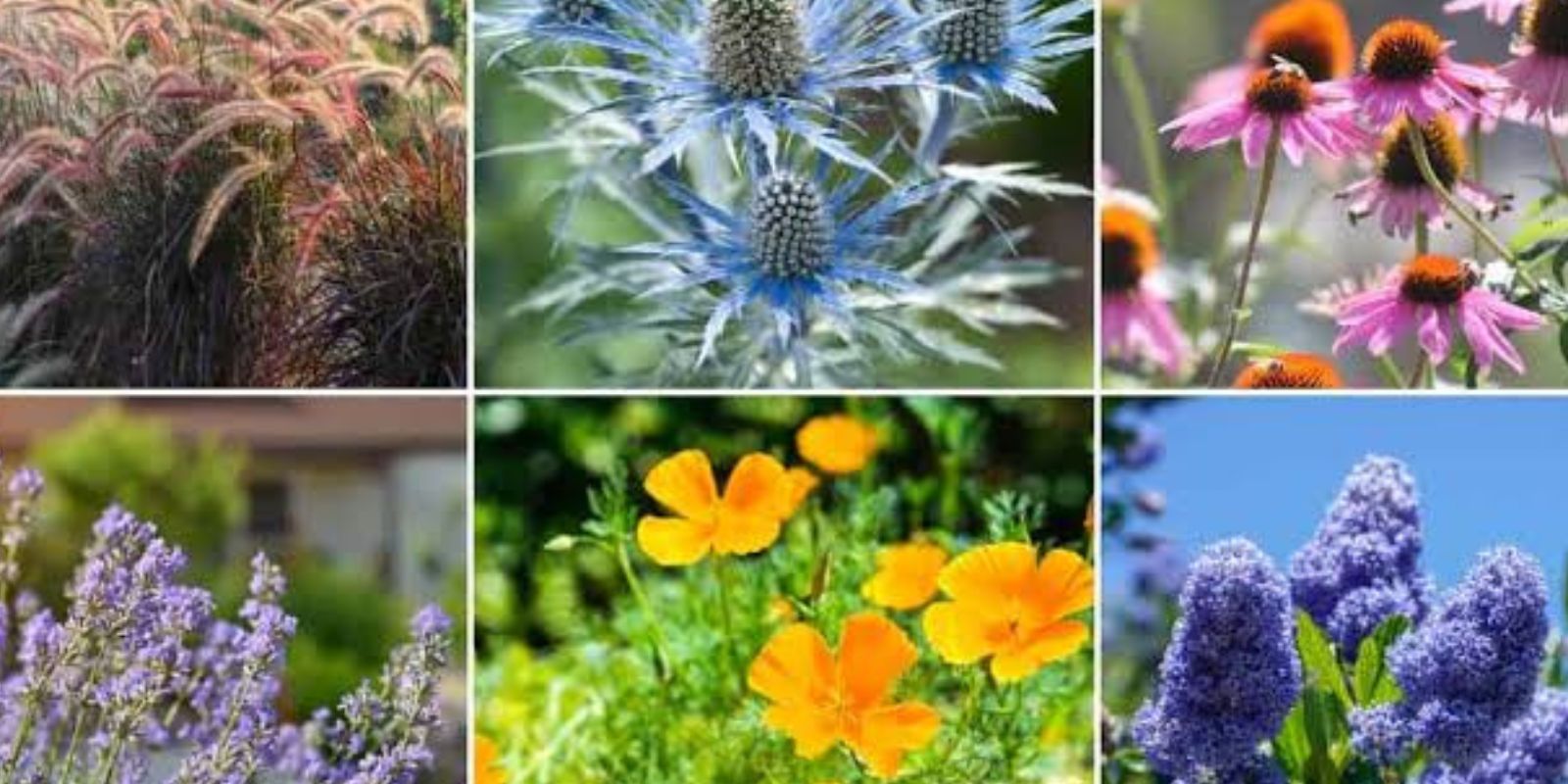Gardening in areas with limited water resources doesn’t mean sacrificing beauty or diversity. By choosing drought-resistant perennials, you can create a vibrant, low-maintenance garden that flourishes under the sun while conserving water. These hardy plants are not only eco-friendly but also add charm and resilience to your outdoor space.
Here’s an in-depth guide to eight exceptional drought-tolerant perennials and how to incorporate them into your garden for a sustainable yet stunning design.
1. Lavender (Lavandula angustifolia): Fragrant and Hardy
Lavender is a classic drought-tolerant plant prized for its fragrant purple blooms and silvery-green foliage. It thrives in well-drained soil and full sunlight, making it a fantastic choice for sunny borders, pathways, or as a centerpiece in Mediterranean-style gardens.
Care Tips:
- Requires minimal watering once established.
- Prune after blooming to maintain shape and encourage growth.
- Pair with rosemary or sage for a cohesive drought-tolerant garden.
2. Stonecrop (Sedum): Versatile and Low-Maintenance
Stonecrop, a succulent perennial, is known for its fleshy leaves and star-shaped flowers that come in shades of pink, red, yellow, and white. This plant thrives in rocky, sandy soils and requires little to no care once planted.
Care Tips:
- Perfect for rock gardens, borders, or ground cover.
- Water sparingly and ensure good drainage.
- Use as a filler plant in container gardens.
3. Catmint (Nepeta): A Pollinator Magnet
Catmint is a favorite among bees and butterflies, producing long-lasting blue to lavender flowers. It’s drought-tolerant and works beautifully in cottage-style gardens or along pathways.
Care Tips:
- Plant in full sun to partial shade.
- Cut back after flowering to encourage a second bloom.
- Combine with coneflowers or gaura for a layered effect.
4. Verbena (Verbena): Prolific Bloomer
Verbena is a resilient plant that produces clusters of small, colorful flowers throughout the growing season. It adds vibrancy to garden beds, containers, and hanging baskets, requiring little water to thrive.
Care Tips:
- Plant in full sun with well-draining soil.
- Deadhead regularly to prolong blooming.
- Ideal for planting along fences or in raised beds.
5. Coneflower (Echinacea): Butterfly Favorite
Coneflowers are a garden staple, producing large, daisy-like blooms in shades of pink, orange, yellow, and white. They are tough, heat-tolerant, and attract a variety of pollinators, including butterflies and bees.
Care Tips:
- Plant in sunny locations with sandy or loamy soil.
- Water sparingly and allow the soil to dry between watering.
- Leave seed heads in the fall to feed birds.
6. Sage (Salvia): Aromatic and Decorative
Sage is a versatile perennial with aromatic leaves and striking spikes of blue, purple, or red flowers. It’s perfect for adding texture and color to dry flower beds and rock gardens.
Care Tips:
- Plant in full sun with well-drained soil.
- Prune after blooming to prevent leggy growth.
- Use in herb gardens or mixed borders for added variety.
7. Thrift (Armeria): Charming and Compact
Thrift, also known as sea pink, produces delightful globe-shaped flowers atop grass-like foliage. It’s a tough, compact plant that thrives in poor, dry soils, making it ideal for coastal or rocky gardens.
Care Tips:
- Plant in full sun and sandy soil.
- Avoid overwatering to prevent root rot.
- Use as edging or in rock gardens for visual appeal.
8. Gaura (Gaura lindheimeri): Graceful and Resilient
Gaura, also called whirling butterflies, features delicate, fluttery flowers in shades of white or pink. It’s a hardy plant that thrives in drought-prone areas and adds an airy feel to garden designs.
Care Tips:
- Plant in full sun with well-drained soil.
- Cut back in late winter to encourage fresh growth.
- Pair with ornamental grasses for a naturalistic garden style.
Creating a Drought-Resistant Garden
Incorporating these perennials into your garden is simple with proper planning and design:
- Evaluate Your Soil: Ensure your soil is well-draining. Amend with sand or gravel if necessary.
- Group Similar Plants: Place plants with similar water and light needs together to make maintenance easier.
- Use Mulch: Add a layer of mulch around plants to retain moisture and regulate soil temperature.
- Choose Companion Plants: Pair drought-tolerant plants with ornamental grasses or succulents for added texture and depth.
- Install Drip Irrigation: This efficient watering system delivers water directly to the roots, minimizing waste.
Benefits of a Drought-Tolerant Garden
- Water Conservation: These plants significantly reduce the need for watering, saving both water and effort.
- Low Maintenance: Once established, they require minimal care, making them perfect for busy gardeners.
- Pollinator-Friendly: Many drought-resistant perennials attract bees, butterflies, and other pollinators, supporting local ecosystems.
- Year-Round Beauty: With diverse foliage, flowers, and textures, these plants ensure your garden remains stunning throughout the seasons.
Final Thoughts
A drought-resistant garden doesn’t mean compromising on beauty or variety. With the right perennials, you can create a lush, colorful landscape that thrives in dry conditions while being environmentally conscious. Lavender, stonecrop, catmint, and the others mentioned are not only resilient but also add unique character to your garden.
Ready to transform your outdoor space into a water-wise paradise? Start planning today! Let us know which of these drought-tolerant beauties you’d like to include in your garden.
#DroughtResistantPlants #GardeningTips #SustainableGardening #LowMaintenanceGarden #EcoFriendlyLiving

